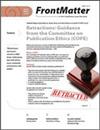来自内华达州东部大盆地的第一只沙士塔地懒(Nothrotheriops;Xenarthra
IF 0.5
4区 环境科学与生态学
Q4 BIODIVERSITY CONSERVATION
引用次数: 0
摘要
摘要。我们首次在大盆地东部发现了沙士塔地树懒(Nothrotheriops shastensis)。这枚右上第二臼齿单体是从 20 世纪 60 年代和 70 年代在内华达州白松县蛇岭北部史密斯溪洞穴挖掘的考古试验坑背面土堆中发现的。虽然该地区所有沉积层的放射性碳年代都早于公元前 11000 年,但该标本的确切年代仍不确定;因此,该标本被认为属于兰科拉布雷陆地哺乳动物时代。以前在大盆地发现的所有树懒标本都来自大盆地的最南端,因此史密斯溪洞穴的记录既是大盆地最北(北纬39.2°)的记录,也是最高(1963米)的记录;该记录也是该物种在这两个参数上的最高记录之一。简述。目前,我们在大昆卡地区对沙士达陆栖羚羊(Nothrotheriops shastensis)进行了首次登记。它是在内华达州白松县蛇岭北部的史密斯溪洞穴于1960年和1970年发掘出来的。虽然无法确定该物种的确切年代,但该地区所有沉积物的放射性碳年代都早于公元前 11,000 卡,因此我们认为该物种属于 Rancholabrean 陆地母亲的年代。该物种在大昆卡地区的所有早期记录都位于其最边缘地带,因此史密斯溪洞穴不仅是大昆卡地区最北端(北纬 39.2°)、海拔最高(1963 米)的记录,而且也是该物种总体中海拔最高的记录之一。本文章由计算机程序翻译,如有差异,请以英文原文为准。
First Shasta Ground Sloth (Nothrotheriops; Xenarthra) from the Eastern Great Basin, Nevada
Abstract. We present the first record of the Shasta ground sloth (Nothrotheriops shastensis) for the eastern Great Basin. The single right upper second molariform was recovered from the back dirt pile of archaeological test pits excavated during the 1960s and 1970s in Smith Creek Cave, northern Snake Range, White Pine County, Nevada. The precise age of the specimen is indeterminate, although all sediment layers in the area produced radiocarbon dates older than 11,000 cal BP; thus, the specimen is considered of the Rancholabrean Land Mammal Age. All previous accounts of this sloth in the Great Basin are from its southernmost margin, making the Smith Creek Cave record both the northernmost (39.2°N) and highest (1963 m) documentation for the Great Basin; this record is also among the greatest of both parameters for the species in general. Resumen. Presentamos el primer registro del perezoso terrestre de Shasta (Nothrotheriops shastensis) en el este de la Gran Cuenca. El único segundo molariforme superior derecho, se recuperó de una pila de tierra proveniente de pozos de prueba arqueológicos, excavados en las décadas de 1960 y 1970 en Smith Creek Cave, en el norte de Snake Range, White Pine County, Nevada. No fue posible determinar la edad precisa del espécimen, aunque todas las capas de sedimentos en el área produjeron fechas de radiocarbono anteriores a 11,000 cal BP, por lo que se considera que el espécimen pertenece a la Edad de los Mamíferos Terrestres de Rancholabrean. Todos los registros anteriores de este perezoso en la Gran Cuenca son de su margen más sureño, lo que hace que Smith Creek Cave sea su registro más norteño (39.2°N) y más elevado (1963 m) no sólo en la Gran Cuenca, sino que se encuentra entre los más grandes de ambos parámetros de la especie en general.
求助全文
通过发布文献求助,成功后即可免费获取论文全文。
去求助
来源期刊

Western North American Naturalist
环境科学-生态学
CiteScore
0.90
自引率
16.70%
发文量
39
审稿时长
>36 weeks
期刊介绍:
The Western North American Naturalist places neither restriction nor preference on manuscripts within the disciplines of the biological sciences. Each issue treats diverse taxa from the perspectives of various disciplines (e.g., ecology, population dynamics, behavior, systematics, anatomy, and physiology).
 求助内容:
求助内容: 应助结果提醒方式:
应助结果提醒方式:


